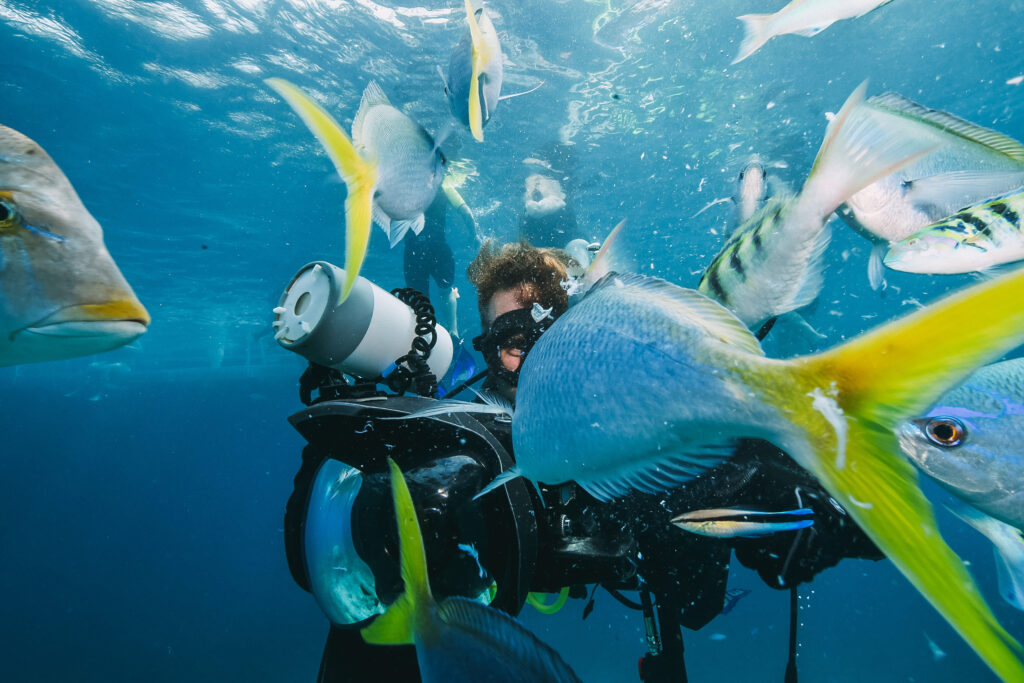What is Bottom Time when Scuba Diving?

Bottom time is an essential concept in scuba diving refers to the time a diver spends submerged underwater, beginning from the descent below the surface until the start of their ascent.
What is it to “Call a Dive” When Scuba Diving?

In scuba diving, the term “call a dive” refers to the decision to end a dive and return to the surface. This decision is a critical aspect of dive safety and can be made by the diver, their buddy, or the dive leader. The rationale for calling a dive can vary from diver safety concerns to environmental changes, but it always centers on ensuring the well-being of all involved. By understanding when and why to call a dive, divers can prevent potentially dangerous situations and avoid unnecessary risks.
What is the Association of SCUBA Service Engineers and Technicians?

The Association of SCUBA Service Engineers and Technicians (ASSET) is a professional organization that plays a crucial role in the global scuba diving industry. This association works in close cooperation with the Health and Safety Executive (HSE) to set and uphold competence standards for technicians who maintain and service scuba equipment. ASSET’s work ensures the highest levels of safety and operational excellence within the field of scuba servicing and engineering. Through its training programs and certifications, ASSET fosters professionalism among diving technicians, providing a trusted framework for safety in an industry where equipment reliability is paramount.
What is Absolute Pressure in Scuba Diving Context?

Absolute pressure, a term frequently used in the field of scuba diving, refers to the total static pressure at a particular point. It is a vital concept that divers need to understand and appreciate to ensure safety during their underwater adventures. In technical terms, absolute pressure is the sum of the atmospheric pressure and the pressure due to any fluid column above the point of measurement. It is always measured relative to a perfect vacuum, which is devoid of all matter and hence bears a pressure of zero.
What is the Auto-Closure Device (ACD)?

The Auto-Closure Device (ACD) represents a significant advancement in scuba diving technology, specifically within the realm of diving regulators. This device automatically seals the regulator’s first stage when it is detached from the cylinder, preventing water, contaminants, and particulates from entering the system. By maintaining a clean and dry first stage, the ACD significantly enhances the reliability and longevity of scuba equipment, thereby improving diver safety. This entry delves into the origins, technicalities, functionalities, and safety implications of the ACD, illustrating its crucial role in modern scuba diving.
What is Acetal Resin?

Acetal resin, a high-performance polymer, has risen to prominence in the realm of scuba diving, revolutionizing various aspects of the sport. This powerful material, also known as polyoxymethylene (POM), is known for its extraordinary strength, resilience, and excellent dimensional stability, properties which have made it an ideal candidate to replace certain lightweight metals in many diving applications.
What is a A-Clamp Adaptor for Scuba Diving?

Scuba diving is a mesmerizing endeavor that introduces enthusiasts to an enchanting world beneath the water’s surface. The equipment used in scuba diving not only contributes to the safety and comfort of the diver but also enables seamless exploration. One such component is the A-clamp adaptor, which plays an integral role in connecting the diving regulator or filling whip with the diving cylinder. This entry delves into the intriguing world of the A-clamp adaptor, its significance, usage, and relation with the DIN thread connection and the CGA 850 “international” connection cylinder valve.
What is a A-Clamp Fitting in Scuba Diving?

A-Clamp Fittings, also known as yoke fittings, are a critical component of scuba diving gear. They bridge the gap between the regulator – the device that allows divers to breathe underwater – and the air tank, serving as the connecting link in the entire system. This connection is vital for the functionality and safety of the dive, making the A-clamp fitting a fundamental consideration for any diving enthusiast.
What is a A-Clamp Valve?

The A-Clamp Valve, sometimes also referred to as the yoke valve, is an integral part of scuba diving equipment that provides a secure connection between a diving cylinder and a regulator or filling whip. The A-Clamp Valve is built to adhere to the CGA 850 “international” connection standard, ensuring compatibility with a wide range of diving cylinders and regulators across the globe.
What is Activated Carbon in Scuba Diving?

Activated carbon, also known as activated charcoal, is a form of carbon processed to have small, low-volume pores that increase the surface area available for adsorption or chemical reactions. Primarily known for its ability to filter and purify, activated carbon plays a crucial role in various industrial applications, from water treatment to air purification. In the context of scuba diving, this material is instrumental in ensuring that divers breathe clean, uncontaminated air. Its ability to adsorb toxic gases and impurities makes it an essential component in scuba tanks and rebreather systems.
